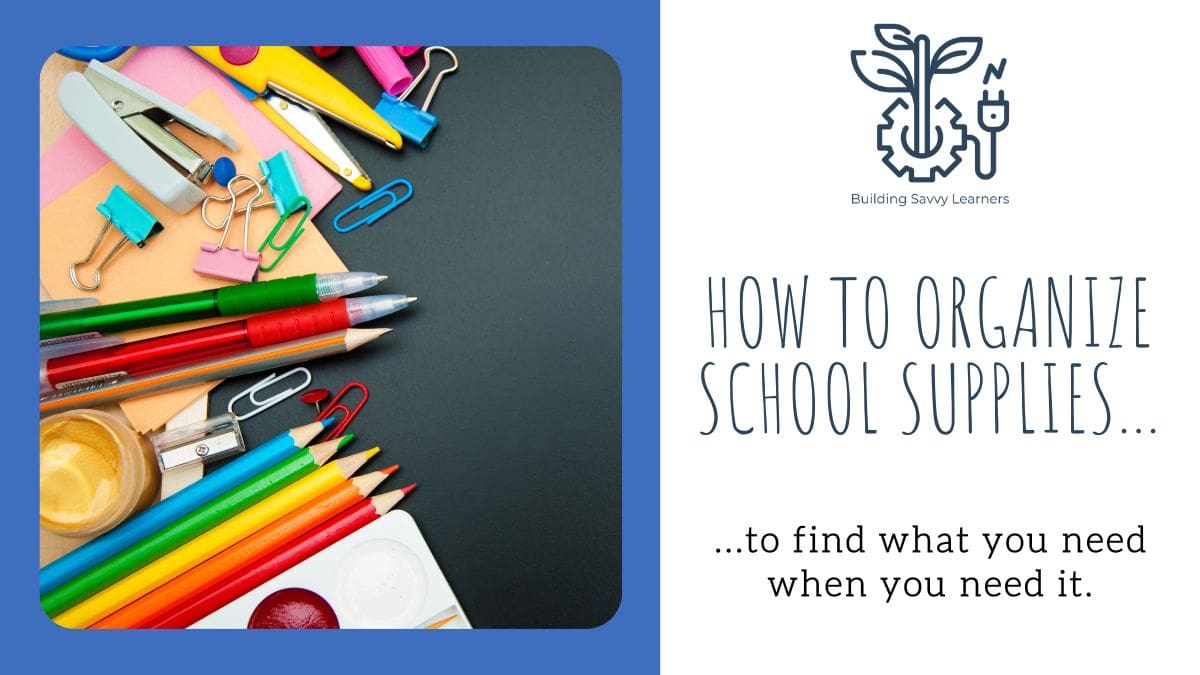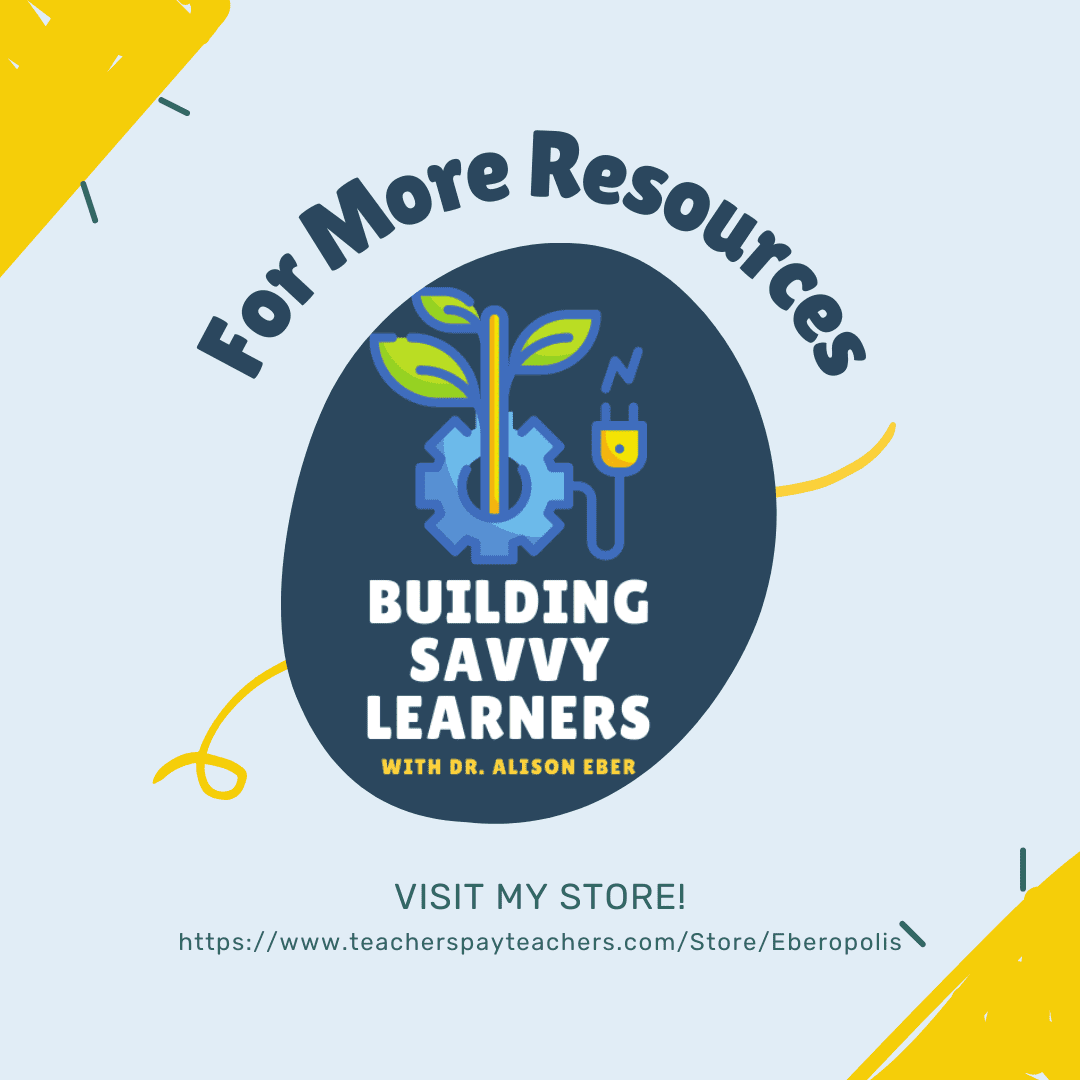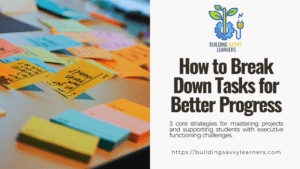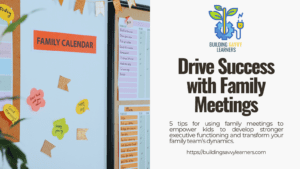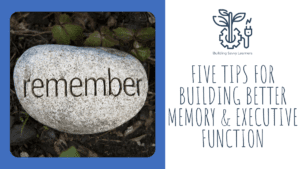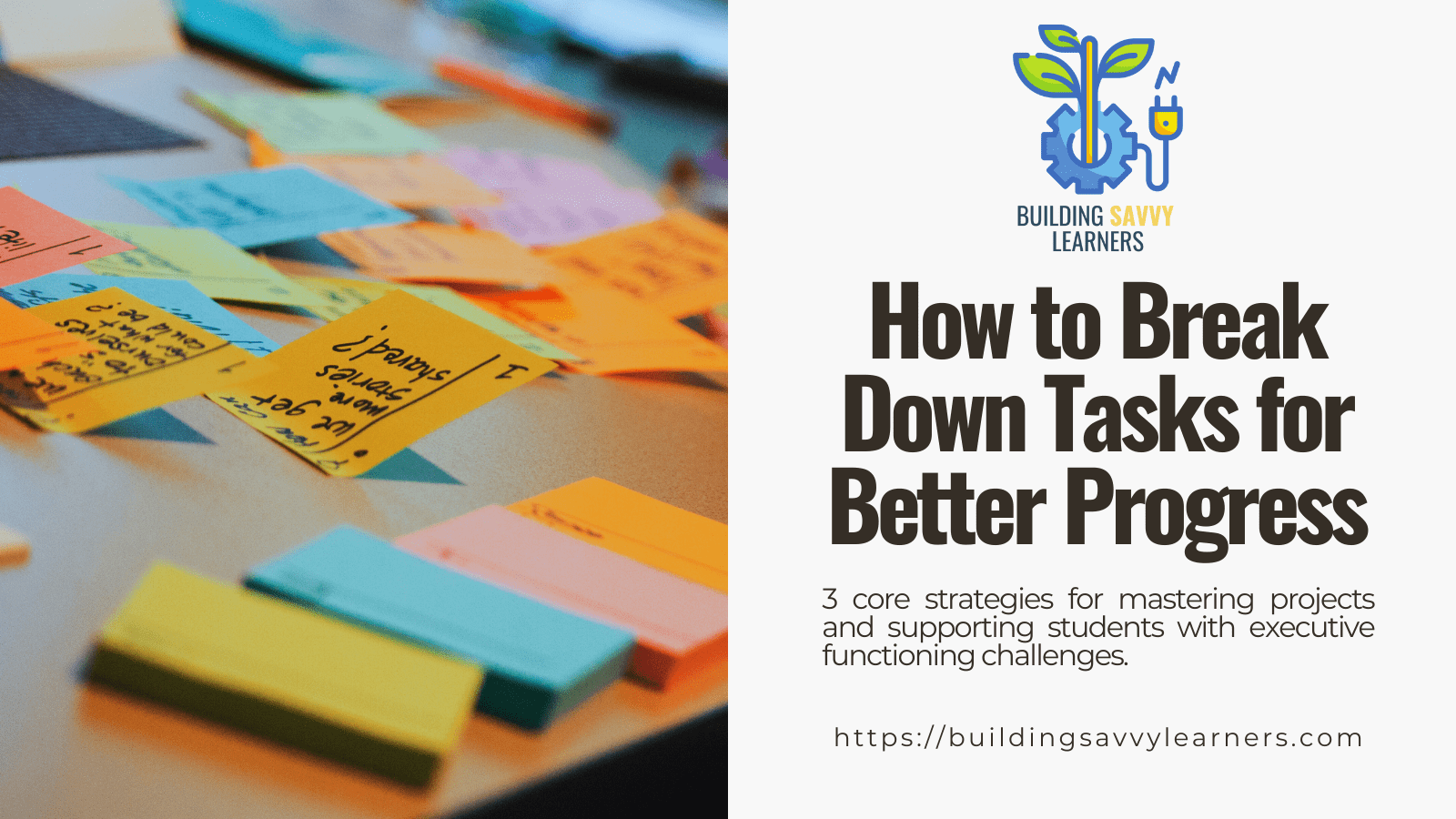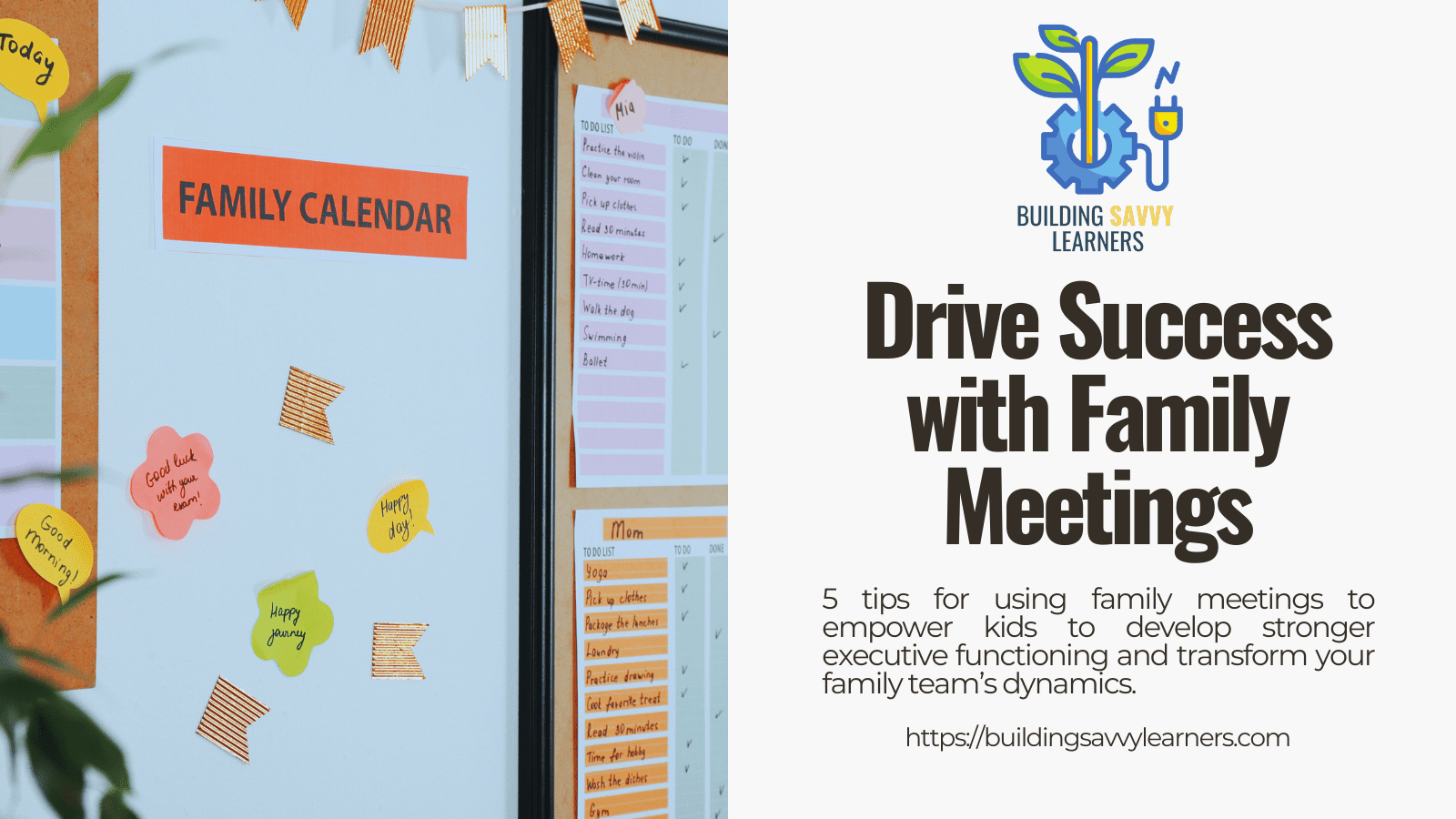I used to love the influx of school supplies that came into my classroom at the beginning of the school year. All those fresh tools and the accompanying promise of learning made my teacher-heart giddy. But if I didn’t take the time to figure out how to organize school supplies, it would quickly turn into a hot mess. I needed to develop organizational systems that kept the supplies accessible. I also needed to ration them out throughout the school year.
As kids move from elementary school onto middle and high school, school supplies are rarely communal. Instead, these students are expected to manage everything independently. For students with executive function challenges, this can be difficult. That’s why today I’m sharing five strategies to organize school supplies to find what you need, when you need it.
(Note: This post contains affiliate links. As an Amazon associate, I earn from qualifying purchases. That means if you click on a link and make a purchase, I will get a small commission at no additional cost to you. To learn more about why I use affiliate links, you can read my disclosure policy. Thank you for supporting Building Savvy Learners.)
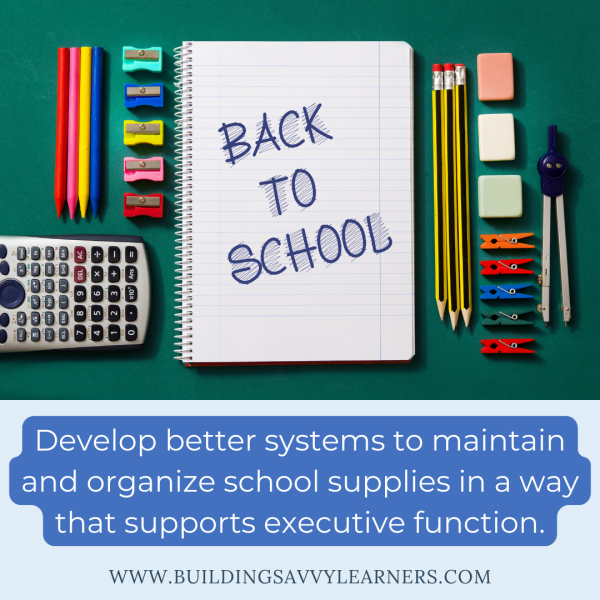
School supply organization ideas for the new school year
Strategy #1: Less is more
Too often, at the start of the school year, students get excited about all their new options for pens, pencils, and other tools. I, too, get excited when a new box of Inkjoy pens arrives with a rainbow of possibilities. But when you carry 24 Ticonderoga pencils from class to class, a couple of things happen. First, you have an abundance mindset where losing a pencil is no big deal—you can grab another one from the box. You can even loan one to all your besties and never worry about getting them back. But before you know it, you’re out of pencils for yourself. Second, carrying excess creates extra clutter at school that you need to keep track of. It can make the backpack or locker harder to organize. Then the student has to dig through extra stuff to find what they need.
Rather than carry all those supplies at once, set a limited quantity of each one to carry. Keep the rest in a designated space at home. This will help the supplies last far longer and not get lost as easily within the first few weeks of school. Teaching students how to organize their school supplies is also easier when you’re working with a smaller number of supplies.
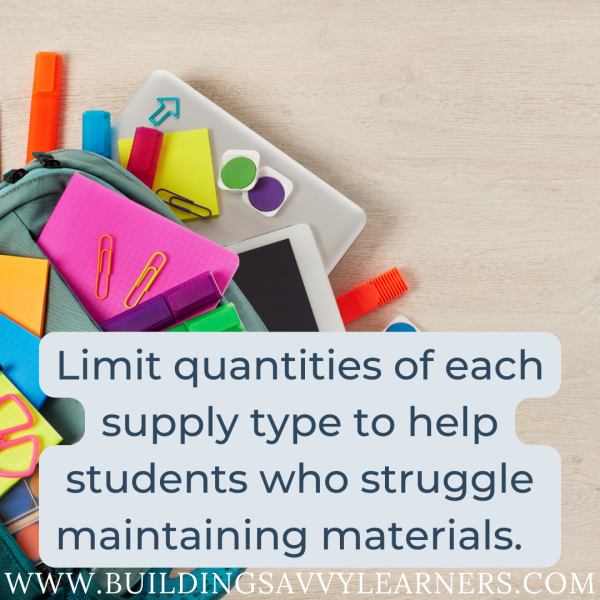
Strategy #2: Duplicate supplies to minimize loss
Transitions can be a difficult time of day for students with executive dysfunction. The more materials that students need to transport from one location to another, the greater the likelihood of something important getting left behind. When it comes to school supplies, try to keep duplicates of as many items as possible — one to keep and use at home, and one to keep and use at school.
For items like textbooks, try reaching out to the teacher and ask if there are any extra copies available for checkout. You could also ask if there is a digital copy available for home use. Increasingly, publishers are also creating digital textbook copies that can be accessed through school-specific passwords. If you explain the student’s organizational challenges—and especially if the child has a 504 plan or individualized education plan—the school should be able to accommodate the request.
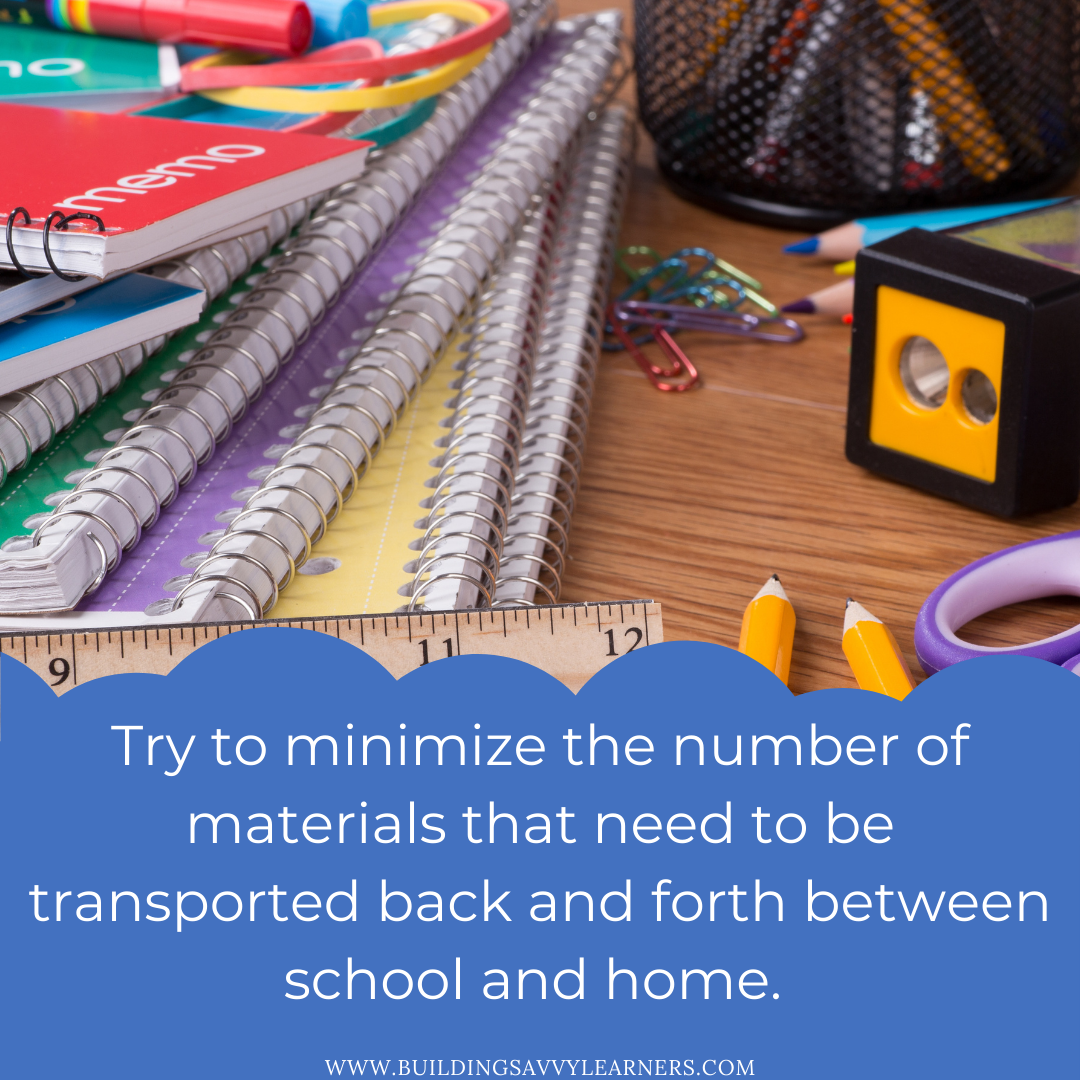
Strategy #3: Teach how to organize school supplies by completing a weekly backpack reset
Backpacks (and lockers) can become a vortex of lost papers and supplies. That’s why it’s important to take some time at least once a week to clean out the backpack and reorganize it. This may be challenging the first time it happens. But with routine maintenance, the process gets easier.
A common mistake people make when purchasing backpacks is choosing ones with tons of storage areas. Unless each storage area gets labeled, this can be a nightmare for students with weak executive function. They often won’t remember which pocket they used for different items. As a result, they often won’t find their supplies. They’ll just assume they’re lost.
At most, your backpack should have no more than 3 or 4 storage compartments.
- Compartment 1 is for all the folders, notebooks, textbooks, etc. that students need each day.
- Compartment 2 is reserved for other supplies like pens, pencils, etc.
- Compartment 3 is for personal items like cell phone, ID, keys, etc.
- Compartment 4 (if needed) is for a laptop or other device and its accessories.
Strategy #4: Keep a well-stocked supply pouch
Since we’re trying to support keeping track of supplies each day, a supply pouch is important. The best ones have at least one clear side so that students can see the contents without opening it up. Identify a reasonable number of items to carry inside the pouch, like the image below, and create a list that inventories the pouch.
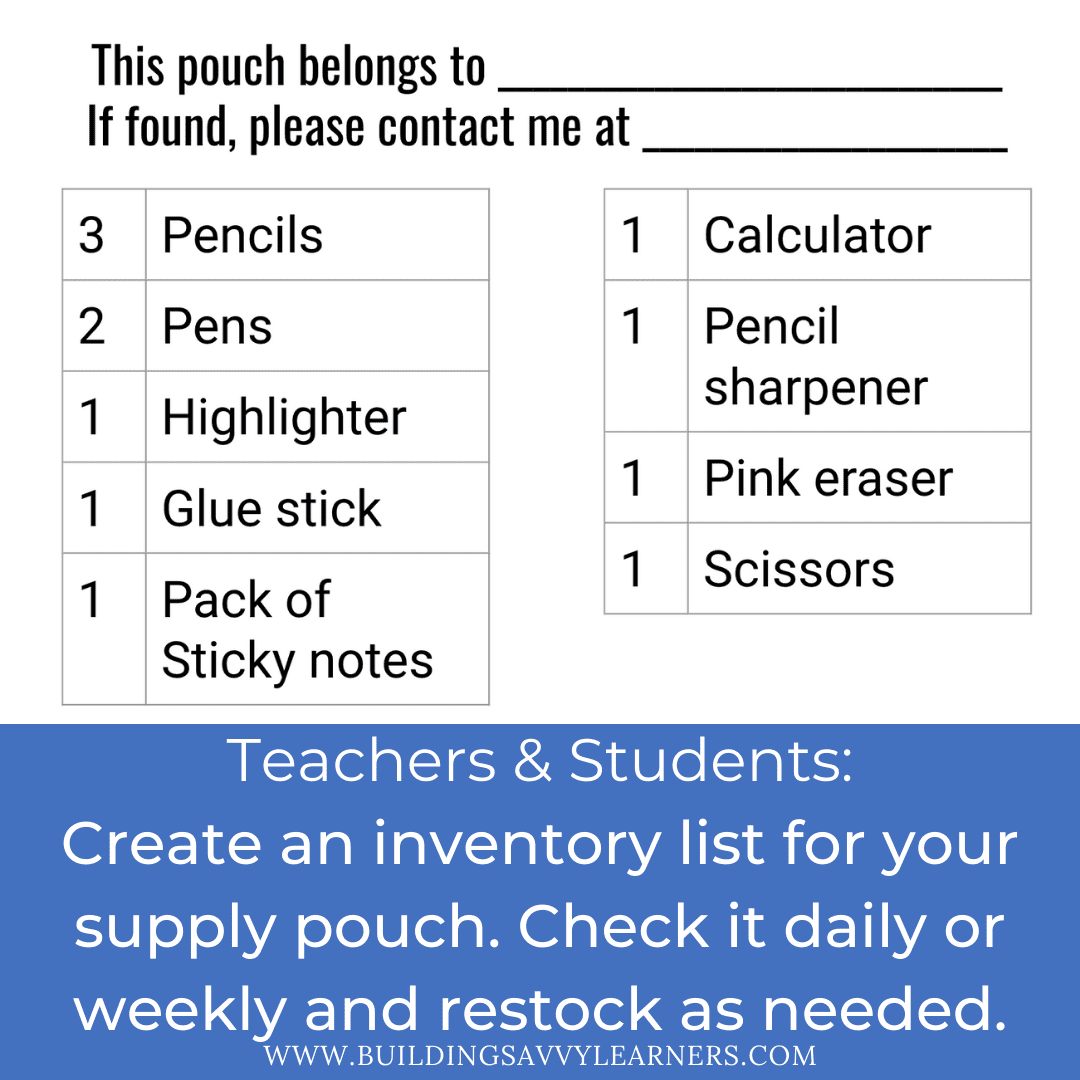
The pouch keeps supplies contained so that they don’t get lost or broken in the bottom of a backpack. The list helps ensure that things don’t go missing. Students can do a quick check during clean up times to make sure they have all the items on the list. If they don’t, they can do a quick scan to see if it fell on the floor or got borrowed by a classmate.
As part of the backpack reset each week, have students double check their pouch to make sure that none of the items need to be replaced or restocked.
Strategy #5: Build a mobile homework station
While it would be great for each child to have a designated homework spot with permanent supplies, life happens. Different tasks may need different environments. And rarely used supplies like staplers make more sense to be shared than purchased for each individual.
A mobile homework station built on a three-tier cart creates a home for all the supplies students need. Use labeled storage containers inside the cart to help kids find items and put them back correctly. When everything has a designated home, it is much easier for students to maintain the organizational system.
When students are doing homework, wheel the cart to their location. That way, supplies don’t ever need to wander away from the cart. If multiple students are working on homework simultaneously, they can either share the cart, or take the entire container holding their needed item (e.g., the cup of markers rather than an individual marker) to their workspace. It is harder to lose a container of items than an individual one, and the container functions as a visual reminder to return the items to the cart.
One of my favorite home-organizing gurus recently featured a video on the importance of a mobile homework station. I used something similar for my teacher supplies in the classroom. We also started using this strategy at home when virtual schooling happened. I can attest from our experiences that this system works.
Organizing school supplies at home
For older students, executive function scaffolds for organization often start from home. By using these five strategies, you can help support your child maintain the supplies they need to complete tasks at home and at school. Having a system in place removes a potential obstacle and creates more opportunities for success.
And if you’re interested in learning more about executive function or wonder if maybe it’s something your child struggles with, then you should check out my free eBook, “Does My Child Need Executive Function Help?” The guide describes several common pain points grouped by skill to help you develop a better understanding of where your child’s executive function strengths and weaknesses fall.
What strategy will help your family most during this back to school season? I’d love to hear from you in the comments.

